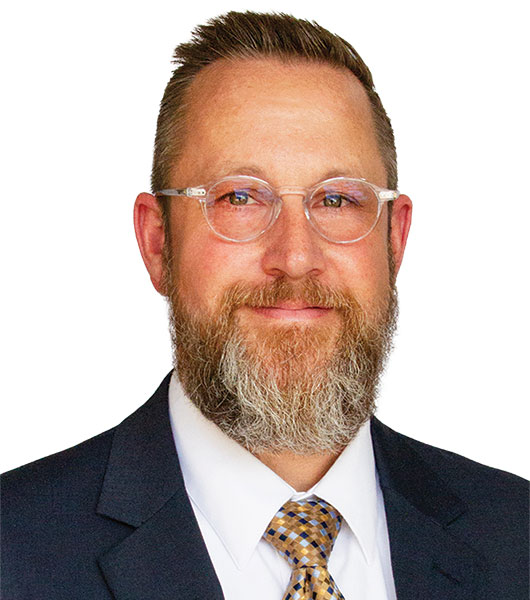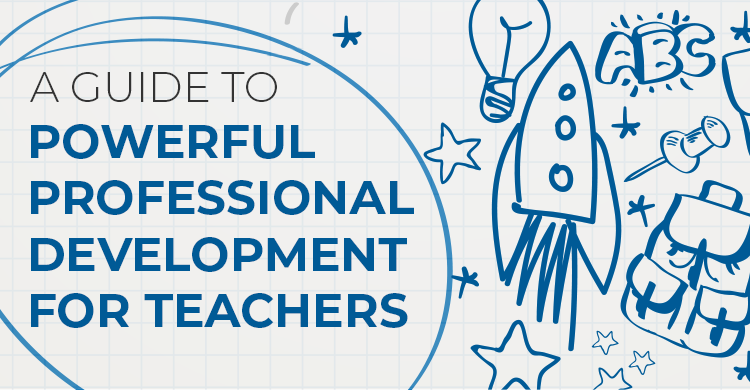We know from educational researchers like John Hattie and Robert Marzano that collective teacher efficacy (CTE) is one of the most important factors in impacting student success. In other words, the more teachers in a school believe they have the competence and confidence to do their jobs as educators well, the more likely their students show improvement and success.
John Hattie (2008) emphasizes that CTE goes beyond individual teacher optimism; it’s a collective belief in shared responsibility for student success. A study by Marzano, Waters, and McNulty (2005) emphasizes that strong collective teacher efficacy is crucial. They argue that school leadership plays a key role in fostering this shared belief system among teachers.
What does professional development mean to teachers?
If we have known for nearly 20 years that teacher confidence and competence are keys to student success and that school leadership plays a role in fostering that, then it should be no surprise that effective professional development should be an essential, active practice in every school.
Yet in my experience as an educator, professional development was given to me with little concern for my interests or needs. Professional development became something that was done once a year. It was neither ongoing nor personalized and certainly not emphasized as a core value in many of the schools in which I worked.
We know that the teacher in the classroom is arguably the most important factor in student achievement, so we should take the time to develop robust and ongoing professional development activities for all teachers.
What are some professional development goals for teachers?
Professional development is not just about acquiring new skills; it’s about reigniting the teaching practice, fostering a culture of continuous learning, growth, and ultimately improving student outcomes. By engaging in professional development, teachers can stay current with the latest educational research, integrate new technologies into their teaching, and refine their instructional practice to meet the diverse learning styles of their students. This dedication to professional growth not only builds competence throughout the educators’ career but also enhances the learning environment for their students, creating a dynamic, engaging, and inclusive classroom experience and fueling a teacher’s confidence.
What are some professional development activities for teachers?
Professional development activities for teachers vary widely, but offering choices for educators to enhance their skills and knowledge can increase both confidence and competence. Some examples for delivering professional development can include, but are not limited to:
Workshops and seminars
These are typically focused sessions on specific topics, such as classroom management, teaching strategies for special education students, or integrating technology into the curriculum. They provide teachers with practical skills and insights that can be immediately applied in their classrooms. Don’t discount the importance of this format as it can be particularly effective in communicating and focusing district or schoolwide expectations.
Conferences
Attending educational conferences exposes teachers to the latest trends and research in education. It also offers opportunities to network with other educators and experts in the field, fostering a community of learning and collaboration. Organizations such as Solution Tree offer both in-person and virtual conferences to allow participants to further customize their learning experience.
Online courses and webinars
The rise of digital platforms has made it easier for teachers to access professional development resources remotely. Online courses and webinars can cover a broad spectrum of subjects, from subject-specific pedagogy to inclusive teaching practices, allowing teachers to learn at their own pace.
Degree and certificate programs
Pursuing advanced degrees or certifications in education not only deepens a teacher’s knowledge in their subject area but also enhances their credentials. These programs often focus on both the theory and practice of education, while others focus on preparing teachers for leadership roles within their schools or districts.
Peer observation and coaching
Peer-based learning opportunities, such as observing a colleague’s teaching or participating in coaching sessions, facilitate direct knowledge exchange and feedback among teachers. This form of professional development promotes reflection and collaborative growth.
Action research
Teachers conducting action research investigate a problem in their classroom or school, implement strategies to address it, and assess the outcomes. This process empowers teachers to take an active role in their own professional development by directly linking their learning to their teaching practice.
What is the best professional development for teachers?
Teachers can access professional development through a variety of channels, ensuring that opportunities for growth and learning are both achievable and aligned with their individual needs and interests. Online platforms like Avanti are designed to provide educators with the knowledge and skills and tools to improve their expertise on classroom instructional practice.
Other common ways professional development can be delivered include school district offerings, professional associations, higher education institutions, and consulting organizations that specialize in teacher professional development. Topics that teachers often select for their professional growth vary widely but could include classroom instruction, classroom management, subject-specific pedagogy, differentiation, student engagement, and fostering positive classroom relationships.
How to improve professional development for teachers
Once a teacher chooses the professional development format and topic that best meets their needs, setting goals is a crucial step that keeps competence and confidence in the forefront of their thinking. By setting specific, measurable, achievable, relevant, and time-bound (SMART) goals in these growth areas, teachers can systematically approach their professional development, leading to meaningful improvements in their teaching practice and positive outcomes for their students.
Professional goals not only guide teachers in selecting the most relevant and impactful professional development opportunities but also help them track their progress and reflect on their learning journey.
Keep in mind that not all professional opportunities cost money; there are many platforms that offer free trial periods, and many companies offer free resources and asynchronous content. Professional development does not have to be an additional set of professional responsibilities; rather, it can be connected to the work already in progress on a daily basis to maximize learning and growth.
Why is professional development important for a teacher?
Through targeted professional development, teachers can acquire and implement instructional strategies that are more effective, innovative, and tailored to meet the diverse needs of their students. This direct linkage between teacher learning and student achievement underscores the importance of investing in educators’ continuous growth. When teachers can integrate new learning into their teaching, it can foster a more engaging, inclusive, and stimulating learning environment. This, in turn, promotes higher levels of student engagement, motivation, and academic achievement.
Different ways professional development impacts student learning
By engaging in reflective practice and intentionally updating skills and knowledge, teachers can stay abreast of new research, technologies, and teaching methodologies. Leveraging workshops, seminars, conferences, and online courses tailored to their specific needs and interests enables educators to foster a culture of continuous learning and self-improvement. This increased confidence and competence could contribute to the positive collective efficacy of their school. Furthermore, collaborating with colleagues and engaging with professional networks can provide valuable support and inspiration.
We need to take time to invest in professional growth, ensuring we remain competent and confident educators who make a lasting difference in the lives of our students.
References:
Hattie, John A. C. 2008. Visible Learning. Routledge.
Marzano, Robert J., Timothy Waters, and Brian A. McNulty. 2005. School Leadership That Works: From Research to Results. Alexandria, VA: Association for Supervision and Curriculum Development.
O’Neill, Jan, Anne Conzemius, Carol Commodore, and Carol Pulfus. 2006. The Power of SMART Goals: Using Goals to Improve Student Learning. Solution Tree INC.

Sam Fritz
Sam Fritz has been shaping the educational landscape for 25 years. He began his journey in middle and high schools, as a teacher, department chair, trainer, and instructional coach. His expertise in leadership, classroom instruction, and technology integration led him to become a district-level trainer for both teachers and administrators.
Beyond the school walls, Sam has graced state and national conference stages, sharing his insights on topics like large ensemble techniques, assessment in the non-core classroom, and one-to-one technology application.
As the director of Avanti, Solution Tree’s revolutionary teacher-driven platform, Sam’s passion for personalized learning comes to life. Avanti’s curated library of videos and resources as well as its vibrant community empower teachers to personalize their professional learning paths, fueling a global transformation in education.

